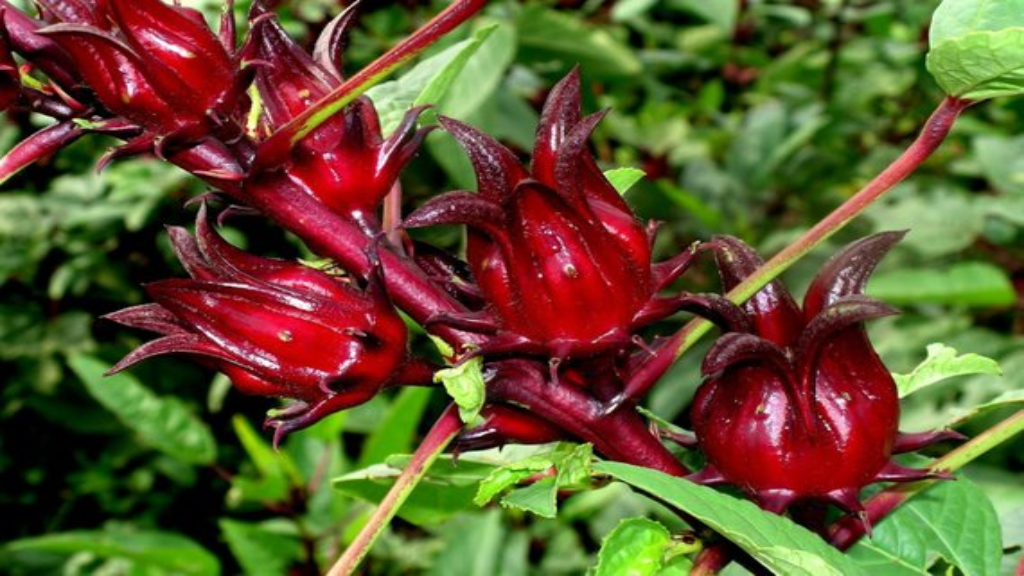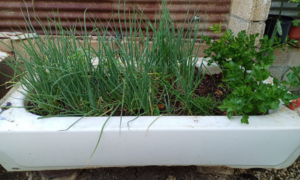Sorrel – Do You Like It Red Or White?

By Debra Williams
HEALTH FACTS ABOUT SORREL
At a certain time of year in Jamaica, a certain type of drink makes an appearance.
The main ingredient comes from the sorrel plant, which bears mainly red bulbs/sepals – although there is a white variety.
In some countries, sorrel is called hibiscus (as it is from that family of plants), so be careful when you are shopping online. Don’t be fooled, like my good friend who purchased expensive dried hibiscus from Egypt and was distraught when she opened the package in Jamaica, close to year-end.
Sorrel is a perennial herb that also goes by the names ‘Narrow-leaved Dock’ or ‘Spinach Dock.’ Sorrel tea can be consumed either hot or cold. Sorrel is also used as a dried herb in meals. The taste is a bit sour, and it’s customary to add flavourings, such as ginger or cinnamon, when sweetening it. In addition to being a great drink for the holidays, the health benefits of sorrel are many.
Uncommon in America, the sorrel plant is most prominent in France, Greece, Egypt, Rome, Mexico, and the Caribbean. It contains nutraceuticals, which are said to be helpful to people’s health. Nutraceuticals can help prevent and treat several diseases, including diabetes, hypertension, heart disease, and cancer.

Present in red sorrels is a group of compounds known as flavonoids, which are known to be anti-oxidants. The flavonoids are also what make sorrel a good deterrent against specific types of cancer. Our immune system is also enhanced due to the flavonoids, as sorrel contains high amounts of vitamin C, vitamin A, magnesium, calcium, and potassium.
The anti-oxidant properties in the sorrel plant can help fight the signs of ageing, protecting against free radical damage that can leave skin looking aged and wrinkled. Free radicals also have a hand in causing stroke and Alzheimer’s disease, along with many other problems.
THE GREEN LEAF OF THE PLANT
When used as a dried herb, the green leaf of the sorrel plant can be used to treat itchy skin, fever, scurvy, and ringworm. Sorrel can be cut thinly and sprinkled over soups and salads to help relieve these ailments. Even if you don’t suffer from these issues, sorrel makes a great addition to a meal; it can be incorporated into sauces for beans and pea dishes.
When taken in the form of a tea, this herb is helpful in treating jaundice and kidney stones. The liquid that comes directly from the leaves can be used to help with certain rashes. When they are consumed dry or fresh, they have a diuretic effect and can clear out the body’s system. As a result of this “cleansing,” the prostate benefits and can work more efficiently.
Sorrel leaves have also been used to treat haemorrhages when combined with the seeds and roots of the plant.
Sorrel is much more than a holiday beverage, and because the leaves are a natural laxative, only a small amount should be consumed at any one time, as it could cause the stomach to react badly. However, medical studies have been performed, showing that this herb can help improve a person’s quality of life and help to maintain the health and function of the whole body.
Thanks to naturalhealthezine.com, my main source for this info.
MEDICAL DISCLAIMER
The information given here is for educational purposes only. It is meant to be used as a guide towards health and does not replace the evaluation by and advice of a qualified licensed health care professional. For detailed interpretation of your health and specific conditions, consult with your physician.
LIFE SORREL DRINK (No need to boil)
Here is a method for preparing sorrel that not only preserves the nutrients (since the sorrel is not boiled), but it also uses a more nutritious sweetener than sugar.
Discover, too, how useful your sorrel pulp can be.
INGREDIENTS:

- 1 pound sorrel
- 2-4 oz. ginger
- 2 quarts sugar cane juice (or you can use maple or agave-sweetened water if you can’t get cane juice)
- 8-12 pimento seeds (optional)
METHOD:
1. Wash sorrel thoroughly, remove from the water and place in a blender
2. Scrape and wash ginger, cut into small pieces and add to the sorrel
3. Pour in sugar cane juice
4. Blend for about 5-10 minutes
5. Allow to stand 4-6 hours
6. Strain and serve chilled; no need to add ice
Tip: Do not throw away the pulp that is left over after you strain the sorrel. Save it for…
SORREL SPREAD
- Place the pulp in the blender
- Add raisins, a dash of coriander and cardamom, and two tbsps. of agave or maple syrup [sweet grass syrup, wet sugar, or honey]
- Use as a spread to eat with your homemade bread or crackers!
Contact Debra Williams (naturopathic doctor) at Life, Health & Foods Wellness Centre – Shop 7, 4 Springvale Ave., Kgn 10. Tel. 876-878-8867/876-326-4650, email: [email protected], website – www.debrawilliamsja.com. She is author of two books: “Recipes for Optimum Health – Healthful cooking” and “When Faith in God is Bigger than the Fear of Cancer.”






